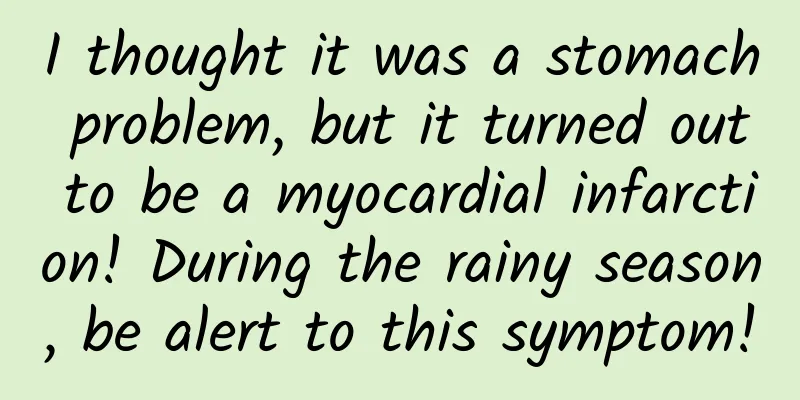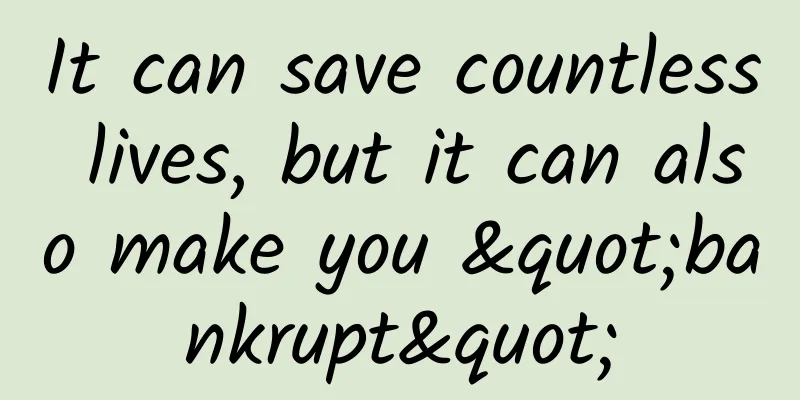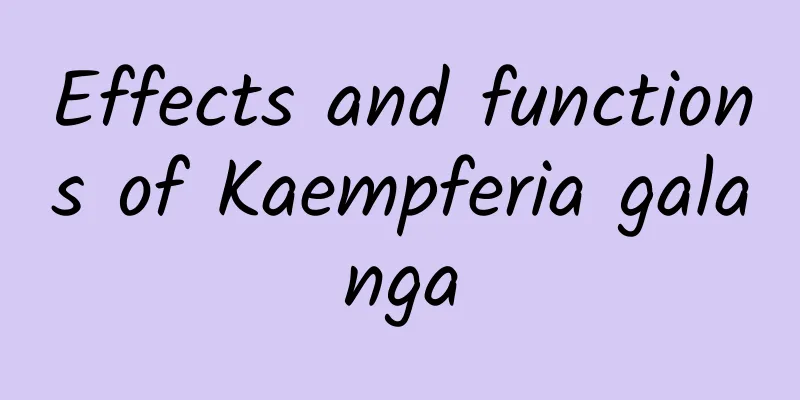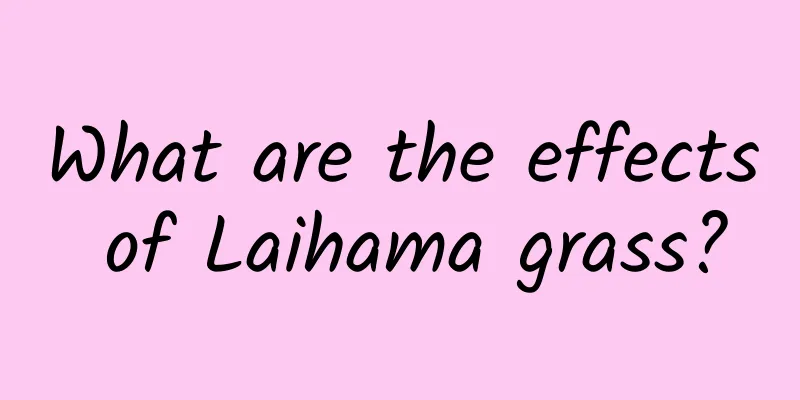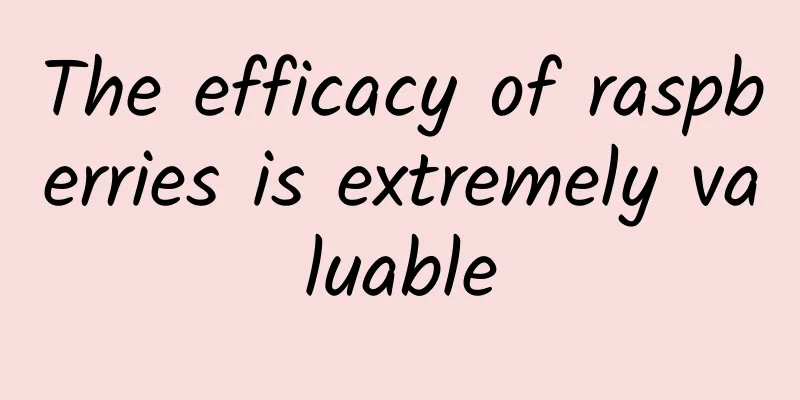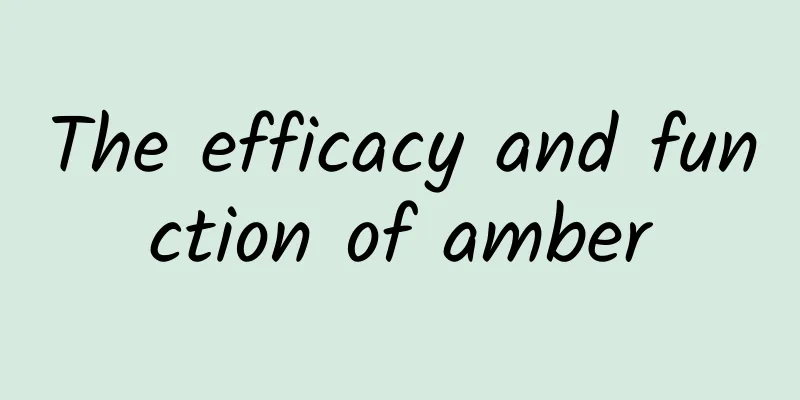Do you believe that hypnosis can work wonders?
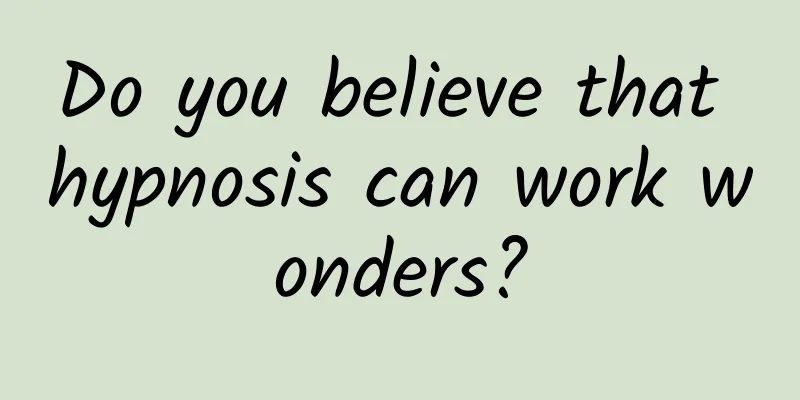
|
Hypnotic suggestion can lead to unusually profound experiences, such as not being able to recognise one's own reflection. © Emmanuel Lafont/BBC Leviathan Press: It is a good thing that there is controversy about hypnosis in contemporary academia (for example, some people believe that hypnosis helps the hypnotized person form false memories). However, excluding the tricks of quacks, the reason why hypnosis therapy is criticized is indeed related to people's historical cognition of it: many people always think that hypnosis is related to witchcraft and superstition. It is not easy to get rid of these prejudices, which requires us to continue to have acceptable and updated research results. Fortunately, with the progress of brain science and neuroscience, we have initially understood the importance of hypnosis to us in many fields. Like many people, the author of this article was curious and skeptical about hypnosis before she underwent it. More importantly, as a journalist engaged in scientific and health reporting, she was very cautious about how to present and restore the subjective experience of hypnosis relatively objectively. At the same time, she also expressed some concerns about the negative effects of hypnosis, which makes the perspective of this article more comprehensive and clear. When David Spiegel learned that his next patient was waiting, he didn't need to ask for the room number because he could hear her gasp halfway down the hallway. Entering the patient's room, he saw a 16-year-old red-haired girl sitting upright on the bed, her knuckles white, gasping for air due to an asthma attack. Her mother was crying beside her. This was the third time the girl had been hospitalized for asthma in a few months. In 1970, Spiegel was a medical student doing a pediatric rotation at Children's Hospital in Boston, Massachusetts, USA. As part of his training, he also took a course in clinical hypnosis. Members of the young asthmatic's medical team had already tried to dilate her airways with injections of adrenaline. After two injections, the girl's symptoms had not eased. Spiegel didn't know what else to do. He asked the girl, "Do you want to learn how to breathe?" The girl nodded, and Spiegel hypnotized his first patient. Once the girl entered the trance-like state that characterizes hypnosis, Spiegel prepared to give the suggestion—the "active ingredient" of hypnosis therapy, usually a carefully worded statement that will elicit an involuntary response. But as the girl sat calmly and attentively on the bed, Spiegel wondered what suggestion he should give. Their hypnosis class had not yet covered asthma. “So I improvised a little bit on my own,” Spiegel told me, recalling the case. “I said, ‘Every time you breathe it’s going to be a little deeper and a little easier.’ ” The improvisational hypnosis worked. In less than five minutes, the patient's gasps stopped and she lay back on the bed, breathing comfortably and evenly. Her mother also stopped crying. David Spiegel believes hypnosis could be an effective and inexpensive medical treatment. © Peter DaSilva It was a formative experience for both doctor and patient. The girl grew up to become a respiratory therapist, while Spiegel began a career as a clinical hypnotist. Over the next 50 years, he would go on to found the Center for Integrative Medicine at Stanford University and, he estimates, he has hypnotized more than 7,000 patients. ﹡﹡﹡ At first glance, hypnosis may seem like one of those useless psychological phenomena. But what makes it so interesting is that it often works. For many people, entering a hypnotic state, paying attention, and listening to the suggestion is enough to make the suggestion become reality. When a hypnotized person hears the hypnotist say their arm will start to move on its own, the arm will indeed "behave." When they hear that their crossed fingers will not separate, they will feel as if they were glued together. When they hear that they will not recognize themselves in the mirror, they will see a familiar stranger mimicking their movements through the glass. (www.tandfonline.com/doi/abs/10.1080/13546805.2011.582287) If hypnosis can suggest that chronic pain will lessen, or anxiety will fade, it could become a valuable therapeutic tool. There is growing evidence that hypnosis is effective for many people experiencing pain, anxiety, post-traumatic stress disorder, stressful labor and delivery, irritable bowel syndrome, and other conditions. For some of these conditions, hypnosis outperforms standard treatments in terms of cost, efficacy, and side effects. (www.sciencedirect.com/science/article/abs/pii/S0149763418304913) (www.tandfonline.com/doi/abs/10.1080/00207144.2019.1613863) (onlinelibrary.wiley.com/doi/abs/10.1002/jts.22077) (www.sciencedirect.com/science/article/abs/pii/S0266613820300395) (pubmed.ncbi.nlm.nih.gov/25858661/) But despite decades of research into its therapeutic value and a growing understanding of how it works in the brain, its clinical adoption has been slow, largely due to a common misconception that hypnosis is little more than a stage magician's trick. “Hypnosis still has a weird ring to it,” Spiegel said. “People either say it doesn’t work or it’s dangerous, and there’s nothing in between. Both are wrong.” The origins of hypnosis Hypnosis-like practices have been around for hundreds of years in many cultures around the world. From traditional trance healing in South Africa to shamanism in Siberia, Korea, and Japan to North American indigenous medicine, many practices tap into the body’s ability to be in a trance-like state. (www.tandfonline.com/doi/abs/10.1080/14635240.2016.1142063) (www.tandfonline.com/doi/abs/10.1080/00029157.1967.10402550?journalCode=ujhy20) (www.tandfonline.com/doi/abs/10.1080/14635240.2016.1142064) Hypnosis in the Western world developed slightly later in Europe and North America, but its origins can be traced back to the late 18th century. In 1775, German physician Franz Mesmer popularized the theory of animal magnetism. Mesmer believed that an invisible magnetic fluid flowed through the human body, influencing our health and behavior. A Mays magnetist performs animal magnetism on a woman. © wikimedia Metzmer worked on manipulating this fluid, perfecting a technique that became known as Metzmerian mesmerism. While working as a doctor in the Hapsburg Empire and later in Paris, he discovered that when he gazed intently at his patients, sometimes performing movements such as running his hand from the patient’s shoulder down the arm, he was able to achieve therapeutic results. He soon became famous and eccentric—his salons in Paris were “dark and suggestive: curtains drawn, thick carpets, astrological decorations on the walls,” wrote Jessica Riskin, an associate professor of history at Stanford University. “Metzmer was impressive in his lavender taffeta gown.” (link.springer.com/chapter/10.1007/978-0-387-70967-3_22) Despite Metzmer’s popularity, animal magnetism quickly fell out of fashion, though the phenomenon Metzmer explored was revived in the 19th century under a new name: hypnosis. A series of prominent physicians developed theories about the nature of hypnosis—separating it from its Metzmerian origins. Most notably, Sigmund Freud, the founder of Western psychotherapy, based some of his most famous analyses on case reports of patients such as “Anna O.” (Bertha Pappenheim, an Austrian Jewish feminist who was hypnotized by Freud’s collaborator Josef Breuer between 1880 and 1882). Before Freud abandoned hypnosis in favor of his technique of “free association,” hypnotherapy had laid the foundations of Western psychotherapy. (pubmed.ncbi.nlm.nih.gov/20166775/) (www.tandfonline.com/doi/abs/10.1080/07351690.2018.1480225) As doctors explored hypnosis’s therapeutic potential, it also gained prominence on the stage. Notorious and popular hypnotists toured Europe, suggesting that participants imitate a chicken, become as stiff as a board, or witness apparitions of the Virgin Mary. (royalsocietypublishing.org/doi/10.1098/rsnr.2017.0011) (royalsocietypublishing.org/doi/10.1098/rsnr.2017.0009#d3e401) Public debate about hypnosis grew in the 1880s, and some countries began to enact laws to regulate its use. As the turn of the century approached, concerns about its far-reaching effects reached a boiling point. In September 1894, 22-year-old Ella Salamon died after being hypnotized by a psychic in a remote Hungarian castle. The story resonated in the medical community and the popular press in Europe and North America. (link.springer.com/chapter/10.1057/9780230235359_16) Three months later, in Germany, Baroness Hedwig von Zedlitz und Neukirch, who wanted to cure her stomachaches and headaches, met with a "magnetic healer" named Czesław Czyński. The healer allegedly used hypnosis to seduce the baroness during multiple sessions, culminating in a sham marriage that caused panic among the German nobility. (For months, the baroness believed she was truly in love with Czyński, who had charming eyes, thick hair, and white teeth.) That same year, George du Maurier’s bestselling novel Trilby, featuring the fictional hypnotist Svengali, became a popular topic of conversation along with news reports of the Chinsky case, which were said to bear striking similarities. Scandals like this have prompted doctors to work to distance themselves from stage hypnotists and occultists and to legitimize their work. Many doctors believe that hypnosis should not be performed by laypeople at all. (pubmed.ncbi.nlm.nih.gov/21062797/) More than a century later, this paradox remains unresolved. Many academic researchers and clinicians I interviewed maintain that lay hypnosis is risky and that its reputation has prevented its wider use in medicine. But as the literature on hypnosis’s clinical efficacy grows and new insights into its brain mechanisms emerge, researchers and clinicians are working to restore hypnosis’s reputation. (www.ncbi.nlm.nih.gov/pmc/articles/PMC5635845/) Before sifting through the kaleidoscopic body of research that left behind Metzmer’s bizarre experiments—from fanciful experiments in the mid-20th century that mixed hypnosis, acid, and snakes, to studies published in top medical journals on hypnosis as an effective drug-free pain reliever—I decided to try hypnosis for myself. (pubmed.ncbi.nlm.nih.gov/10801169/) Stage hypnosis can involve suggestion such as animal imitation, but academics are concerned about its potentially harmful consequences. © Emmanuel Lafont/BBC When I approached the office of Devin Terhune, a cognitive neuroscientist at Goldsmiths, University of London, on a Monday afternoon, I was nervous for two reasons. First, I had never been hypnotized before, and although I had spoken to several researchers and clinicians so far, my knowledge of the theory had not prepared me for the practice. Some people talk about profound experiences during hypnosis, from out-of-body experiences to hallucinations. Second, it was also possible for the exact opposite to happen, where I would sit with my eyes closed for 20 minutes and not respond to any hypnotic suggestion. Only about 10-15% of the population are classified as the "highly hypnotizable" group, who respond to most hypnotic suggestions. Being "high" in the hypnosis field means that this group has intense and sometimes profound experiences during hypnosis. However, most people's responses are more moderate. These moderately hypnotizable people may respond to some hypnotic suggestions, but fail more challenging tests. The remaining 10-15% of the population is called the "lowly hypnotizable" group. This group may respond to a few simple suggestions, or even no response at all. Research shows that your level of hypnotic sensitivity, whether high or low, will stay with you throughout your life and is difficult to change. A 1989 Stanford University study tested the hypnotic sensitivity of 50 psychology freshmen and retested them 25 years later. Despite the passage of time, the scores of the old classmates remained very stable, even more stable than other individual differences such as intelligence. (pubmed.ncbi.nlm.nih.gov/2926631/) The reasons behind this trait are still an emerging area of research. There are hints that levels of dopamine, a neurotransmitter (chemical messenger) in the brain, are linked to hypnotic sensitivity. Preliminary studies have suggested that a gene called COMT is involved in dopamine metabolism, but results have been mixed and a clear genetic map has yet to emerge. (pubmed.ncbi.nlm.nih.gov/29319456/) (pubmed.ncbi.nlm.nih.gov/25084618/) Another neurotransmitter, gamma-aminobutyric acid (GABA), has also been linked to hypnotic susceptibility. A study conducted by Spiegel, Danielle DeSouza, and colleagues at Stanford University found that highly hypnotizable people had higher levels of the neurotransmitter GABA in a brain region thought to be closely associated with hypnosis. This brain region, the anterior cingulate cortex, is also associated with cognitive control and will. GABA has an inhibitory effect on brain cells, so DeSouza and Spiegel believe that the higher the level of GABA in a brain region, the easier it is to enter a hypnotic state. (academic.oup.com/cercor/article/30/6/3644/5763072) There are also indicators of personality traits that correlate with hypnotic susceptibility—but not on the Big Five personality level: Whether it's extroversion or introversion, high or low agreeableness, neuroticism or emotional stability, openness or closedness, cautiousness or impulsivity, there are both "high" and "low" hypnotizable people on any dimension. However, Terhune says some subtle traits are more common in the highly hypnotizable group—such as greater imagination, sensitivity to environmental cues, and a greater desire for self-transcendence. Interestingly, the hypnosis researchers I interviewed described several traits that are common in highly hypnotizable people: They may become so engrossed in a book that they lose track of their surroundings, or they may scream loudly in response to startling scenes in a movie. On the way to Terhune’s office, I thought about the time I was so absorbed in reading Naomi Alderman’s novel The Power that I took the wrong tube in London and was late for my first day of work. I also thought about how I had avoided watching anything remotely scary in the cinema ever since I let out a bloodcurdling scream during the extremely scary movie Harry Potter and the Chamber of Secrets. I wondered if I could be hypnotized. Unconscious reaction A large cushion rests on a grey sofa in Terhune's office, positioned as if to prop up a sleepy head. A plain black box, resembling an oversized shoebox, stands out in the room. These two items are the only things that distinguish this office from the countless other academics' offices at Goldsmiths College in south London. Here, Terhune studies many aspects of consciousness, from hypnosis to metacognition, using them as props for his experiments. With my permission, Terhune performed some basic tests to gauge my hypnotic susceptibility. He drew a small dot on the whiteboard across from the couch, calling it the "target," and asked me to focus on it. I did, and he began to read from a script in a slow, steady voice: "I will help you relax, and I will give you a set of instructions to help you gradually enter a hypnotic state. Continue to pay close attention to the target. Please keep your eyes on it. While you are staring at it, listen carefully to what I say. If you are willing to do what I ask you to do, if you focus on the target and what I say, you will be able to enter a hypnotic state..." After a few minutes, I closed my eyes and felt relaxed. Incredibly relaxed. I noticed it on my face first, as my habitual social smile disappeared. Then I felt the tension in my shoulders ease, and they dropped further away from my ears. I leaned back against the cushions behind my head. I was relaxed, but I was still aware of what was happening; my mind wasn't completely blank. Occasionally, a few thoughts would pop into my head ("Am I really hypnotized now? Can I wake up if I want to?", "I can feel my heart beating, am I rushing the hypnosis too much?", "How strange is this feeling? Can I control it?"). I tried not to pay attention to these thoughts that were running in circles. Terhune reminded me to focus only on his voice, and the mental distractions would decrease. Terhune said, "First, I want you to hold your arms out at shoulder height." I waited for my arm to move of its own accord, but it just hung down at my side. I immediately felt a twinge of disappointment ("Oh no, I'm totally unhypnotizable?"). Terhune paused, then continued in a calm, patient voice, "This isn't a suggestion yet, don't worry, you can just extend your arm out in front of you as normal." ("Oh, OK, so I can do this intentionally.") I held my arm out of my hand. "Here we go," he said. © Tenor Now, here comes the real hint. "I want you to pay close attention to your hands—how they feel, what's happening in them. Notice if you have any numbness or tingling in your hands. Apply gentle pressure, making sure your wrists are not bent. Pay close attention to your hands. Imagine holding something very heavy in your hands, like a heavy book. Very, very heavy. Hold the book in your hands. Now your hands and arms feel very heavy because of the weight of the book pressing down on them." It came from nowhere, but there it was in my hand. With my eyes still closed, I marveled at its weight. It felt like I actually had a thick book in my outstretched hand—the only way I could tell it wasn't a real book was that my palm didn't have the tactile feel of its cover. "It gets heavier and heavier, and your arms go lower and lower, heavier and heavier, heavier and heavier, and your hands go down, down, down..." And so it was. Before Terhune had finished the hint, my hand had fallen to the couch. From the direction of his desk I could hear the sound of pencils scratching on paper. I still felt calm and relaxed, but somewhere in my head I heard a very quiet "Wow!" Next came another test—Terhune asked me to hold my arm straight out in front of me. “This time I want you to imagine your arm becoming extremely rigid,” he said. My elbows felt like they were made of dry, splintered wood. The sensation wasn't as intense as it would be with a heavy book, but I could definitely feel resistance when I tried to bend my elbows. After a while, I was able to break through the resistance and the sensation eased. But it was a bit of a struggle. Then came a few more tests - Terhune suggested I fall asleep and have a dream about hypnosis. I drifted off to sleep, and some fleeting images floated through my mind. For a moment, a white Scottish terrier was playing in a green field - but it wasn't a fully formed dream, more like a thought-wandering before falling asleep. I don't know what Scottish terriers have to do with hypnosis. Then Terhune told me he was playing Jingle Bells, at low volume at first, and then he would gradually turn it up. I heard nothing except the rustling of the trees in the wind outside the window. Before we finished, we did two more tests. First, I held my hands out as if holding a soccer ball at arm's length. Terhune suggested that my hands were being pulled apart by an irresistible force. The sensation was a bit like the invisible ball experiment, but more intense. This time I was curious to see what would happen if I resisted even a little. I tried to close my palms, but the suggestion was too strong to resist. Within seconds, my arms were fully out to my sides. In the final test, Terhune suggested that my left arm become extremely heavy, and I had to try to lift my left hand away from my thigh. This was about as hard as trying to bend my elbow—hard, but I managed to lift my hand a few inches. The test was over, and Terhune slowly counted down from 20 to 0 to bring me out of hypnosis. When he counted to 5, I opened my eyes. I felt a little dizzy, as if I had slept too long and woke up too quickly. There are individual differences in hypnotic sensitivity, just like intelligence, which varies from person to person. © Emmanuel Lafont/BBC Terhune told me that based on the test results, he estimated that I was roughly in the middle of the normal distribution of hypnotic susceptibility. The test I showed a strong reaction to (reaching out to feel the weight and feeling the force of pulling the hands apart) works for most people. Terhune says about 90 percent of people will feel something about the weight test—even himself, who is in the low hypnotizable group. As for the tests I struggled with (the stiff arm test and the heavy arm test), responses to them are relatively rare. The other two tests are very difficult—few people can respond to suggestion and have a vivid dream on command, and even fewer can hear Jingle Bells playing in a quiet room. Even if the odds are low, there’s still a chance that I’m highly hypnotizable, so Terhune gave me these two extremely difficult tests. There were other tests he didn’t run. One was agnosia, where the suggestion was to forget the name and purpose of a simple object, like a pair of scissors. Terhune showed me what he had prepared for this test—a pair of scissors, some tape, a pen, and a ruler on the black box I’d noticed earlier. He’d ask me to point out which was the scissors, something highly hypnotizable people can’t do. If you hand them a piece of paper and ask them to use the scissors with the paper, they’d be confused. Another test was hypnotic amnesia, where the subject was suggested to forget everything that happened during hypnosis. But Terhune found that very few people (about 12%) responded to this test. Statistically, if you've never been hypnotized before, your experience is likely to be quite similar to mine. After the session, I took the train home. On the train, I still had a residual sense of calm, and I was thinking about what had just happened. Although it felt real, I still had a healthy skepticism about the credibility of subjective reports as scientific evidence. Hypnosis was different from anything else I had experienced, and I was eager to describe everything I felt during the hypnosis more objectively. (www.nature.com/articles/nrn3538) Hypnotized brain The famous Stroop test provides some useful evidence. This test measures how difficult it is for people to identify the color of a word when the meaning of the word is inconsistent with the color of the word. For example, if you imagine the word "red" written in blue ink, it will take people longer to identify the color of the ink; if it is written in red ink, which corresponds to the meaning of the word, it will take less time (readers can test it themselves). (faculty.washington.edu/chudler/java/ready.html) When the hypnotized subjects were given the suggestion that they could no longer read, the words became meaningless graphics - so they were quicker to identify the color of writing that did not match the meaning of the word because they were no longer distracted by the meaning of the word. (pubmed.ncbi.nlm.nih.gov/12470132/) In the Stroop experiment, the names of colours were written in an ink colour that did not match the meaning of the words - a potentially revealing experiment under hypnosis. © Emmanuel Lafont/BBC There also appears to be a difference in brain activity when someone is asked to "pretend" compared to an unconscious reaction. In a small experiment, researchers studied 12 healthy subjects using a positron emission tomography (PET) scanner to measure metabolic activity in various parts of their brains. In one set of tests, the subjects were asked to pretend that they couldn't move their legs. In another set of tests, the same subjects were hypnotized and suggested that their legs were paralyzed. Brain imaging studies showed differences in the brain areas that were activated in the two conditions. (pubmed.ncbi.nlm.nih.gov/16571568/#affiliation-1) A later study further explored the question of hypnosis versus pretending, this time using an MRI scanner that provides more detail when looking at soft tissue. This time, the researchers found that the subjects' motor cortex—the area of the brain that controls body movement—was activated while they were hypnotized. This suggests that the hypnotized people were actually trying to move their limbs, although the results were the same: they did not make more movements than those who pretended to have paralyzed limbs. (www.ncbi.nlm.nih.gov/pmc/articles/PMC6684790/) So, are there any characteristics of the hypnotized brain that could explain the peculiar sensations and experiences of a hypnotic response? This is an emerging area of research, but there are several potential answers. Spiegel says part of the answer can be found in the brain’s salience network, which includes the anterior insula and anterior cingulate cortex. This network helps us identify surroundings that are worthy of attention—sifting out the relevant information from the vast amount of sensory data that floods our brains at all times. In one experiment, Spiegel and his colleagues hypnotized highly and less hypnotizable subjects while scanning their brains. During hypnosis, the highly hypnotizable people had less activity in their salience network. “When that happens, you’re less worried about other things that might be happening,” Spiegel says. “It allows you to disconnect from the rest of the world.” (www.sciencedirect.com/book/9780128045930/salience-network-of-the-human-brain) (www.ncbi.nlm.nih.gov/pmc/articles/PMC4365296/) This may go some way to explaining the intense feeling of focus during hypnosis, but what about the strange feeling that your body is reacting without your conscious awareness? Terhune said the strongest evidence came from the brain's default mode network (DMN), a region of the brain that is most active during rest. "This network is thought to be closely associated with self-related mental activity, such as daydreaming and mind wandering," he said. (www.annualreviews.org/doi/abs/10.1146/annurev-neuro-071013-014030?journalCode=neuro#_i9) © Board Certified Hypnotist In particular, the medial prefrontal cortex, part of this network, is thought to play a crucial role in hypnosis. “This region appears to be involved in self-related processing, metacognition (knowledge about knowledge), and the ability to control one’s own thoughts,” Terhune said. “These are all processes that may be inhibited during hypnotic induction.” Because the activity of the default mode network is temporarily impaired, people may have difficulty thinking of themselves as conscious individuals. This may be the root of the peculiar feeling that you do not have full autonomy over your own body. Many studies have found relevance for this part of the default mode network in hypnosis, but Terhune adds: “Sometimes we don’t know what the causal relationship is." For example, the medial prefrontal cortex has also been linked to inferring other people’s mental states. It could be that while you’re hypnotized, you’re also thinking about the person and guessing what they’re thinking. “But this is the strongest evidence,” Terhune concludes, “that this is a reduction in autocorrelated processing and metacognition.” From experimental to clinical As academic experimenters tease out the details of how hypnosis works, clinicians are exploiting its effects for medical treatments—just as they have been doing for centuries. Perhaps the best medical use of hypnosis is to relieve pain without drug intervention. Many meta-analyses (scholarly papers that analyze the results of a series of combined studies and evaluate the quality and design of each study) have found consistent results. A recent meta-analysis of 45 hypnotic pain relief trials showed that hypnotized subjects experienced more effective pain relief than about 73% of subjects in the control group. Two meta-analyses in the early 2000s concluded that hypnosis was superior to standard care and urged its wider clinical use. As you might expect, the effects of hypnosis vary widely—people with higher hypnotic sensitivity have greater pain relief, according to a review of 85 controlled trials, including Terhune’s. (www.tandfonline.com/doi/full/10.1080/00207144.2021.1920330) (doi.org/10.1037/0033-2909.129.4.495) (www.tandfonline.com/doi/abs/10.1080/00207140008410045) © Online Psychology Degree Guide Some of the most exciting findings are in the area of chronic pain – pain that lasts for more than three months. In the UK, 13-50% of people experience chronic pain, while in the US, the rate is around a third. Globally, nearly two billion people suffer from recurrent tension headaches, the most common form of chronic pain. By its nature, chronic pain is particularly difficult to treat with medicines, as opioid analgesics are addictive, have side effects and have contributed to the opioid epidemic. Hypnosis has been shown to reduce pain intensity and its interference with daily life. A meta-analysis of nine randomized controlled trials found that patients who received eight or more sessions of hypnosis had significant pain relief. (linkinghub.elsevier.com/retrieve/pii/S014976342200080X) In 2000, Spiegel conducted a randomized trial of hypnotic analgesia in 241 patients undergoing invasive surgical procedures without general anesthesia. The patients were divided into three groups: one that received standard care, one that had a professional caregiver to provide additional help, and one that received hypnosis. All three groups were equipped with a button that allowed them to self-administer a mixture of fentanyl, a strong opioid painkiller, and midazolam, a drug that causes drowsiness and amnesia. Every 15 minutes before, during, and after surgery, the patients rated their levels of pain and anxiety on a scale from 0 (calm, no pain) to 10 (deep fear, anxiety, and pain). (pubmed.ncbi.nlm.nih.gov/10801169/) The standard care group used more than twice as much fentanyl and midazolam as the skilled caregiver and hypnosis groups. The standard care group also had the longest surgery time (78 minutes on average) and the hypnosis group had the shortest surgery time (61 minutes on average). "The anxiety level in the hypnosis group was zero," Spiegel said. "The trouble with the surgery was significantly reduced." To his dismay, there has been no significant increase in the use of clinical hypnosis since the paper was published. Spiegel has now developed a self-hypnosis app called Reveri, which he hopes will make evidence-based hypnosis more widely available to those who want it. Given that hypnotherapy is effective for a growing number of conditions, why has the practice been so slow to become mainstream? The problem of coercion Most reservations arise not from a lack of evidence for the effectiveness of hypnosis, but rather from concerns and misunderstandings about the unconscious nature of hypnotic responses. "That's one of the most common misconceptions: If you follow my instructions and go into a hypnotic state, I can control you and make you do bad things," Terhune said. "But there's very little evidence to back that up." Amanda Barnier, a professor of cognitive science at Macquarie University in Australia, explored this question in a study that cleverly used postcards. She divided the subjects into two groups, one of which was a highly hypnotizable group, and gave this group a large number of postcards. After the hypnotic induction, the subjects in this group were prompted to send her a postcard every day until they received a call from Barnier. (journals.sagepub.com/doi/abs/10.1111/1467-9280.00052) Barnier began receiving postcards the next day, and the postcards kept coming. When Barnier eventually called the subjects back, their responses were hilarious. “People were saying, ‘Oh my God, this is out of my control. Even if it’s raining cats and dogs, I’m going to go out and send you a postcard. I can’t help it. I’m forced to do it.’ ” Barnier recalls. But the experiments didn't end there. Barnier also used a control group of people who were not hypnotized but were simply asked to send her a postcard every day. "I said, 'I'm a PhD student, I'm writing a thesis. Here are some postcards, can you send me one every day?'" Perhaps surprisingly, the group did as they were told. When Barnier called them to talk about the experience, their reaction was muted. “They said, ‘Well, you seem disappointed.’ ” Barnier concluded from this that the hypnotized subjects were not being forced to do anything they were not originally prepared to do—even though they might have felt that way. Earlier experiments, conducted during a period when moral norms were more relaxed, found that more extreme demands elicited similar responses. In 1939, an experiment was shocking. The subjects who were deeply hypnotized were hinted to grab a large diamond rattlesnake with bare hands. The experimenter told the subject that it was just a roll of rope. One of them grabbed it as requested, but was blocked by a piece of glass, and the other woke up from the hypnosis and refused the request. The other two hypnotized subjects reached out to grab it without being told that the snake was a roll of rope. The experimenter then suggested that two of the subjects were angry that the experiment assistant put it in such a dangerous situation that they could not help but poured thick sulfuric acid on the assistant's face—both subjects did (played a trick, and the real sulfuric acid was replaced with a harmless liquid of the same color). (psychnet.apa.org/record/1988-97797-000) The unhypnotized control group also participated in the experiment—but most people stopped because they were afraid that they would not want to get close to the snake. Another 1952 study also came out of the same results, but later research pointed out that the control group was not placed under the same pressure as the hypnotic group, which made the comparison unfair. An experiment in 1973 attempted to do a more thorough study of the problem, which puts hypnotized and unhypnotized subjects on an equal footing. The experimenter implied a group of hypnotized college students, letting them go out of campus and selling what they thought was heroin, while the control group was asked to sell without hypnotization—both groups of subjects did. But the experimenter was in trouble because one of the subjects’ father was a professor at the school. He found that his daughter had been trying to sell heroin to his peers, and he was "displeased". "Experiments show that college students are just willing to do something crazy. It has nothing to do with hypnosis," Tehun said. As with Barnier's conclusion, many of the surprising things people do in a hypnotic state cannot be attributed to hypnosis at all, but just that people will do all kinds of strange things as required. However, these experiments do not give a definite answer: whether people are hypnotized in a state of hypnosis will be really forced to do things that go against their will. But outside of academia, hypnosis is often out of harmful intentions. Application and abuse As night fell, the vehicle drove along the busy North London Road, and there was a small shop in the corner. The shop owner was placing items inside, when a confident young man walked in, wearing a gray T-shirt, dark coat and jeans. He approached the shop owner and touched his arm. Some strange things could be seen from the blurred CCTV footage. The shop owner stood there in a daze, as if in a trance. The young man touched the shop owner's chest and shoulders, and then flipped his pocket. The shop owner stood beside him, as if unaware. When the thief left, the shop owner realized that he had been robbed. “As scientists, it’s hard to explain these cases without the full picture,” Tehun said. “Can you use distractions to commit crimes? Of course. Can you make people dazed and rob or attack them? It’s hard to say, and it’s very complicated.” The robbery on North London Road is just the tip of the iceberg, and there are countless such distressing crimes, many of which involve sexual assaults by rogue hypnotists on female patients, and criminals often use the power disparity between them and victims to abuse them. "It's obviously disgusting and terrifying. These cases are difficult to deal with because they occur in an imbalanced power comparison involving experts or experts who the victim may trust. “These events are extremely terrible, they happen when power relations are asymmetry, such as coaches, teachers or medical staff.” © Tenor In addition to power aberrations, there are other factors that are difficult to sort out, such as people’s prejudice and stereotypes about hypnosis (e.g., “I lost control in hypnosis”). Given these complex factors, “we don’t know whether hypnosis itself is the driver of harm compared to the broader context,” says Barnier. All of this begs the question: How should people who want to take hypnosis therapy be on guard to make sure their treatment is as safe as possible? Barnier gives a golden rule: “If someone can’t provide you with treatment without hypnosis, he shouldn’t treat you with hypnosis.” Every clinician and investigator I contacted for this report, including Hilary Walker, CEO of the Clinical and Academic Hypnosis Association of the United Kingdom, and Joe Tramontana, the president-elect of the American Clinical Hypnosis Association, agrees with this approach. The Royal College of Psychiatric Medicine also recommends that therapist be checked, and the college’s website reads: “Hypnosis therapy can only be performed by qualified medical staff responsible for professional institutions. For example, doctors, psychologists, nurses, occupational therapists or physiotherapists.” One reason this is crucial is that many countries, including the UK and Australia, do not have official agencies to regulate non-professional hypnosis. “In Australia, you’ll find that a lot of people have been attending weekend hypnosis courses or studying at hypnosis colleges for six months,” Barnier said. What if there is a problem after treatment? “There is no professional agency for complaints.” In some countries, hypnotic therapy colleges may choose to connect with organizations that provide registration for non-professional hypnotic therapists – for example, the UK’s Popular Hypnotic Therapy Standards Committee (GHSC). However, the committee told me that none of these organizations belong to the official regulatory body because “hypnotic therapists” and “hypnotics” are not as protected (and regulated) titles as “doctors” and “physiotherapists”. For example, the GHSC requires registered hypnotic therapists to comply with ethics and open complaint channels to patients with registered members. “However, since hypnotic therapy is not subject to laws and regulations, neither we nor any other organization (providing registration for non-professional hypnotics) can prevent unregistered practitioners from continuing to practice independently,” a spokesperson for the committee said. The key information given by the clinicians and professional institutions I spoke to remain the same, that is, be sure to ensure that the person who is performing treatment for you has applicable medical qualifications. And, if you have health problems, you should consult a GP. Hypnosis may seem profound, but in many aspects of daily life, we have hypnosis-like experiences. © Emmanuel Lafont/BBC As Barnier says, although hypnosis has always been given a “mysterious” color, it has similarities with many of our experiences in our daily lives. For many people, being addicted to a good book, or being obsessed with a movie (and maybe even a Harry Potter movie), is something that is often happening. Or, when you drive along the highway, you find yourself overlooking landmarks on the road. If you have experienced this, then there isn’t much difference between being hypnotized. There are even similarities between being addicted to a smartphone and hypnosis—both distorts the concept of time, reduces perception of the external environment, and reduces the sense of autonomy (the feeling that you can’t control your desire to slide your phone screen). But it's normal if you don't often have this kind of concentrating experience. "It's like the difference between extrovert and introvert. Some people just live in their own world in different ways," Barnier said. Similarly, hypnosis is not much different from the everyday world, and as a means of medical intervention, it has a lot in common with other methods. If the operation is wrong, the needle, syringe, or scalpel can cause great damage. But in the hands of skilled people, they can become powerful tools. Text/Martha Henriques Translated by Amanda Proofreader/Pharmacist Original text/www.bbc.com/future/article/20220519-does-hypnosis-work/ This article is based on the Creation Sharing Agreement (BY-NC) and was published by Amanda in Leviathan The article only reflects the author's views and does not necessarily represent the position of Leviathan |
<<: How do the old men in the park master the secret of whipping at supersonic speeds?
Recommend
Who should drink Astragalus extract?
Everyone knows that Astragalus is a common Chines...
The efficacy and function of moss-growing Pedicularis
Pedicularis spp. is a familiar medicinal material...
The efficacy and function of Corydalis orientalis
As a traditional Chinese medicine, do you know th...
The efficacy and function of sweating
In daily life, we can often see the figure of Dah...
The efficacy and function of rice grass, the most comprehensive introduction to plants
Normally when we go to the hospital, the doctor a...
What are the medicinal values of Astragalus?
Astragalus is probably a medicine that we have ne...
Cell Breakthrough: This newly developed diet produces immediate results in 3 weeks!
Compiled by: Gong Zixin Industrial diet High in p...
The efficacy and function of golden back loquat leaves
In today's society, health preservation seems...
The efficacy and function of Huafeng car
Huafeng car is a commonly used medicinal material...
The role of lavender
The first time you come into contact with lavende...
The efficacy and function of Sophora japonica root
Sophora japonica root is a very common Chinese me...
Is it reliable to use Cordyceps sinensis to treat kidney disease?
The kidneys are one of the most important organs ...
The efficacy and function of hibiscus leaves
Hibiscus leaves are very nutritious and precious ...
Why is radar called the "clairvoyance" in modern warfare?
Radar is a device that uses electromagnetic waves...
The effect of drinking Tongkat Ali soaked in water
Tongkat Ali is generally only found in subtropica...
